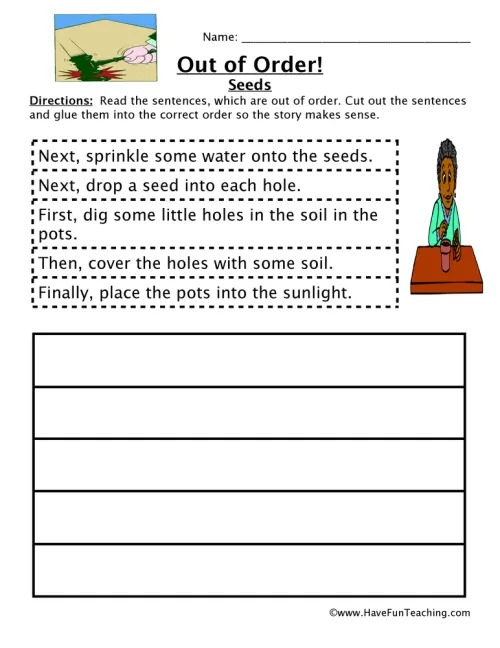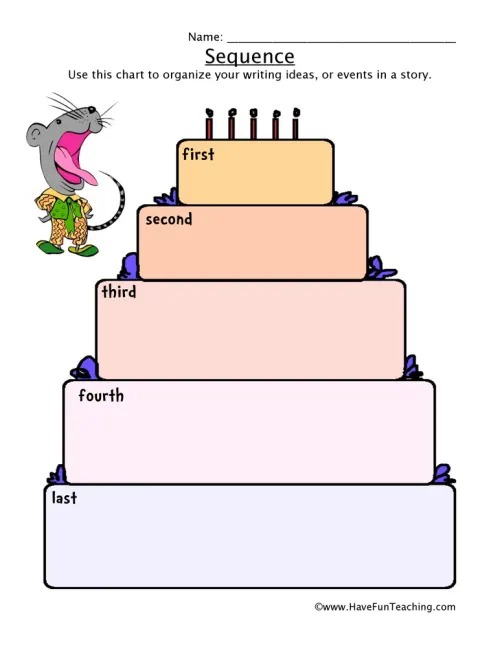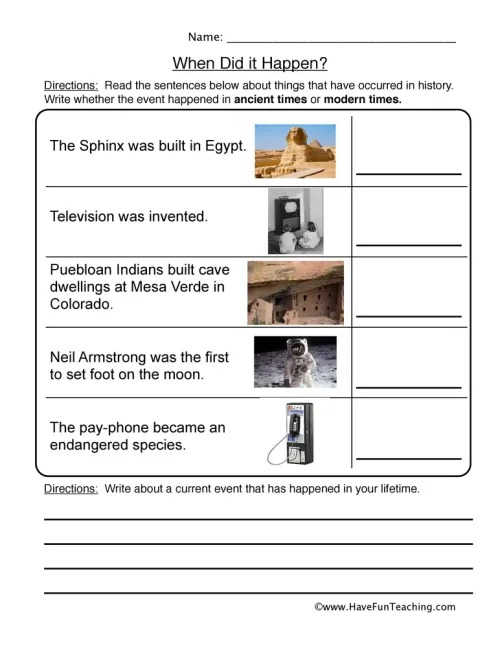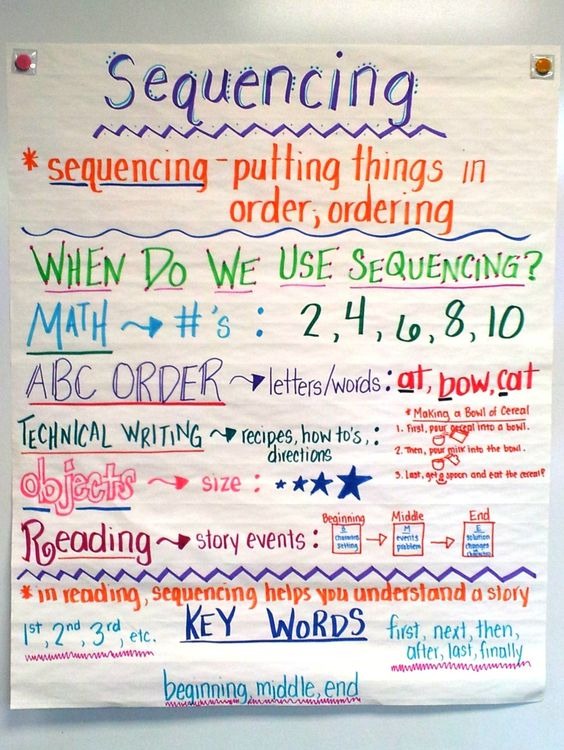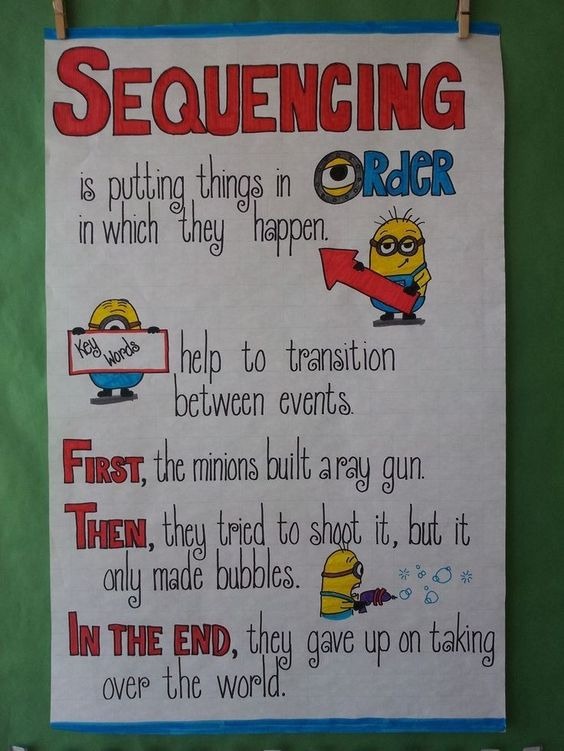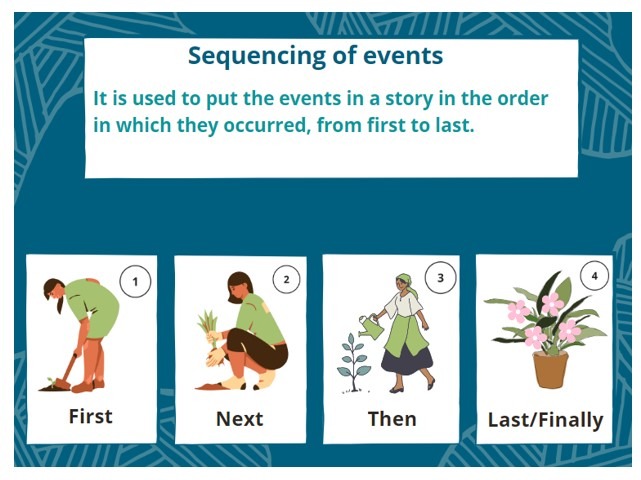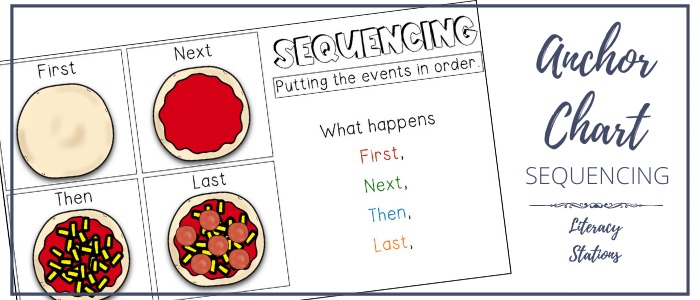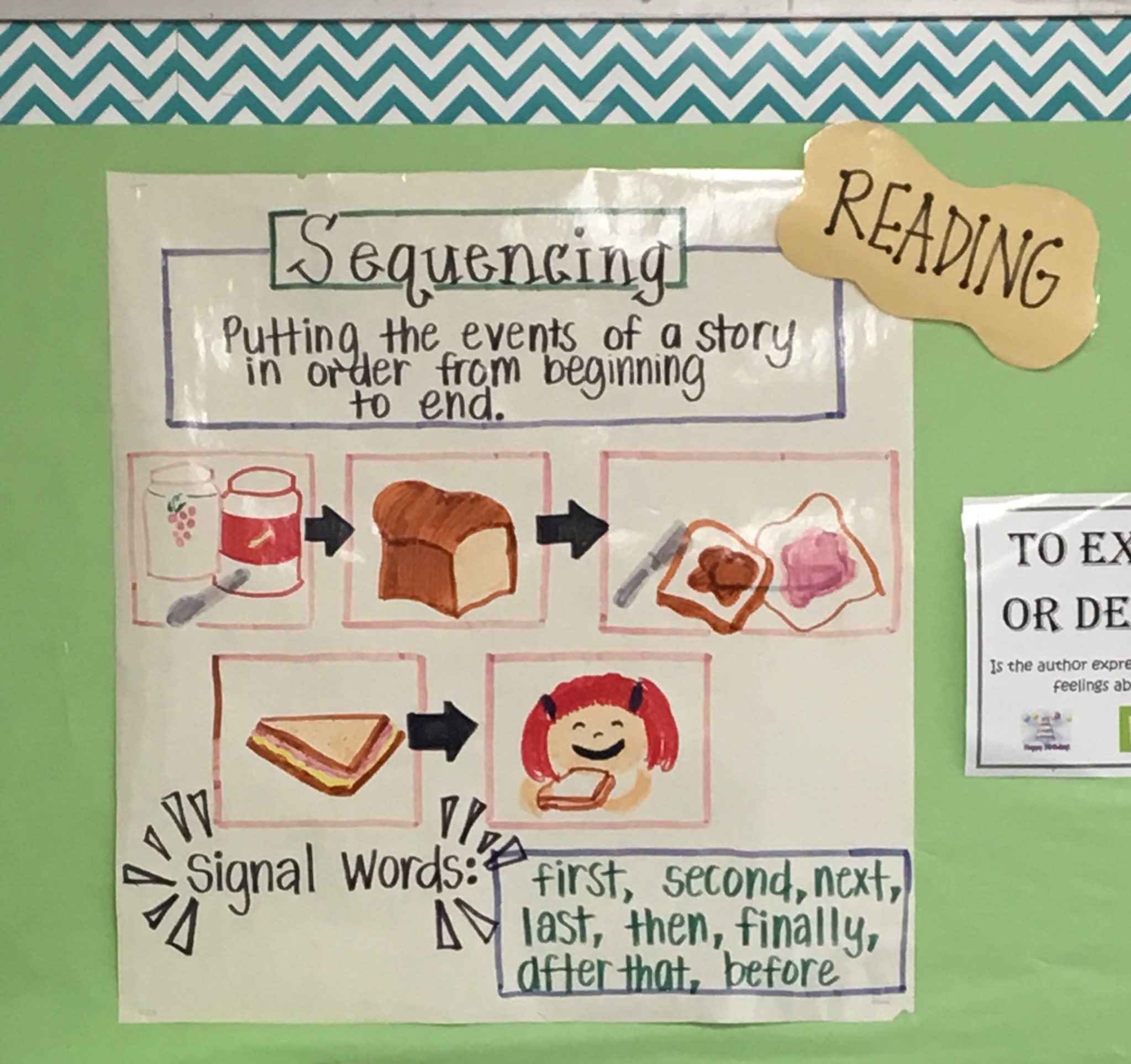Students know how to do things in a sequence naturally. I’m pretty sure they put on their clothing in a certain order that is practical or don’t get into a swimming pool without putting on their costumes first. The challenge comes when they look at things like stories or processes and have to put them in sequence.
In this post, you’ll learn what to look out for in a good sequencing anchor chart and find some great examples to work from.
Table of Contents
- Elements to look out for in a good sequencing anchor chart
- sequencing anchor chart Resources from TeachSimple
- sequencing anchor charts from teachers
- Final thoughts about sequencing anchor charts
Elements to look out for in a good sequencing anchor chart
Putting events in sequence may seem to be the simplest, most logical thing about any text. It’s not always easy to do, though. Working with anchor charts that have certain elements will help you to teach your students what sequencing is and how to do it efficiently.
Clarity
This may sound obvious, but make sure that any sequencing anchor chart you use is clear. This means the images, layout and font on one level. On another, it means that the information must be presented simply and clearly. It’s no use trying to teach students about sequencing if the anchor chart itself is not easy to follow.
Simplicity
Don’t over-complicate the process of working on sequencing. Begin simply. Use an anchor chart that presents a story or process that has only 4 or 5 steps. That is enough for students to begin with, particularly in the lower grades.
Differentiation
Make sure that the students can differentiate between the parts of an anchor chart. It should feature different fonts, colors and other techniques to show the different elements or points. This also applies to the parts of the story, or events.
Accuracy
A good sequencing anchor chart must present the correct information about what sequencing is and how to do it. You can’t possibly expect your students to understand sequencing if they don’t have the correct input.
Appealing
A good sequencing anchor chart should include features that will to the students in a particular grade. This may be the use of font or image. It may be the story or process that is being used. Remember that an anchor chart will be more effective if the students can relate to the content.
sequencing anchor chart Resources from TeachSimple
- Pumpkin Sequencing Charts By First in Line
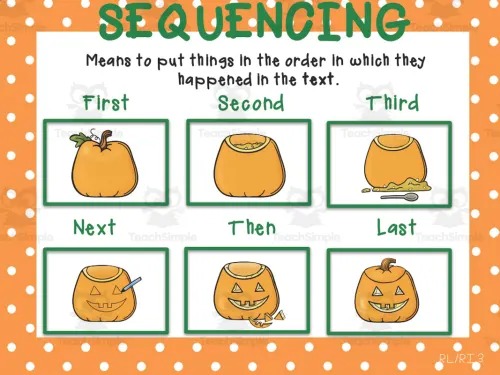
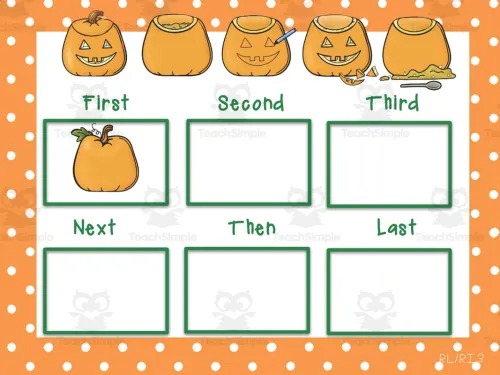

This is a great seasonal Pumpkin Sequencing Chart. It consists of 10 anchor charts, most of which contain blank spaces for the students to fill in. You could use the first chart as a reference for the students filling in the blanks on the other sheets. If you use this resource during fall, you can also produce your own in the same pattern for other seasons.
- Gingerbread Man Anchor Chart By First in Line
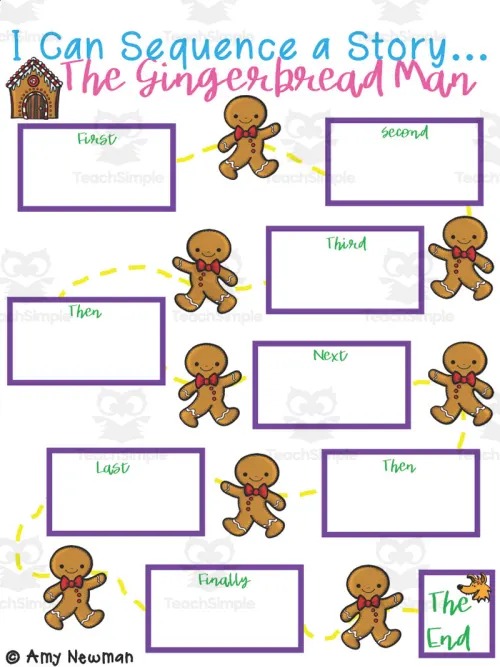

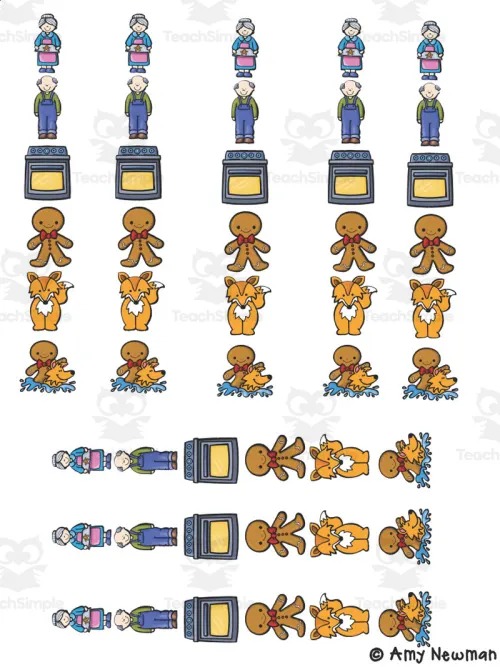
One of the cutest anchor charts you will find is this based on The Gingerbread Man. It is aimed at Grades 1 & 2, giving them two different ways of presenting the story. The main anchor chart includes blank spaces for the students to fill in. The kit also includes graphics the students can cut out and use.
- Planting A Seed Sequencing Worksheet From Have Fun Teaching
This anchor chart presents the process of planting a seed Out of Order! It is a single anchor chart or worksheet. The students should cut out the sentences and stick them in the correct order on the worksheet. You can use the sheet as an anchor chart, then print the sentences separately. Invite individual students to attach the sentences in order.
- Sequencing Organizer Worksheet From Have Fun Teaching
This resource is a Sequencing Organizer Worksheet, but it can be used effectively as an anchor chart. The design uses graphics and numeral logic to show the students in the lower grades how to arrange the steps in a sequence. Because it is blank, you can use it in a whole lot of different scenarios. I suggest using the chart as a blank template that the students can fill in on their own in relation to a process. You can also give them the steps out of order and they can attach them to the chart in the correct order.
- Sequencing Graphic Organizer Worksheet From Have Fun Teaching
It is the image in this Sequencing Graphic Organizer Worksheet that is so valuable. The directions on the sheet indicate it should be used for showing the sequencing in a technical subject. However, the image can be used with any sequencing activity. The idea of cogs interlocking and driving the logic is valuable. You will need to introduce the students to the idea, which is also a way that you can turn an anchor chart activity into something truly interactive.
- Historical Events Order Of Events Worksheet From Have Fun Teaching
This resource is entitled When did it happen? It is non-grade specific and can be used as part of the social studies curriculum. This sheet includes major events in the past and asks the students to identify when they occurred. It will take just a little adaptation to turn this into an anchor chart and related activities where the students can physically arrange the pictures of, or information about, events in historical order.
sequencing anchor charts from teachers
- Sequencing From Confessions Of A Primary Teacher
I like this anchor chart on Sequencing: putting things in order, because it puts everything in context. It is more suited to middle and higher grades. The use of different fonts and colors helps to organize the content. You can display it in your class, then refer to the aspect you will be using in any sequencing exercise.
- Sequencing From Art Of It
This is a fun introduction to sequencing using familiar figures. Using them will give the students something to relate to. You can really use any familiar figure to create a chart like this. The colors and fonts make the order of events clear. I suggest tasking your students with creating their own charts from a simple story, using familiar figures.
- Sequencing Of Events By Orchids The International School
This anchor chart on the Sequence of Events uses set of pictures very effectively to guide the students through what sequencing is. You can give them to the students out of order. You can also use a whole lot of different stories and rhymes with the same chart.
- Sequencing Putting The Events In Order From Teaching Firsties Mrs. Hull
I think this sequencing anchor chart on making a snack is one of the cutest ever. Using four stages and an image for each stage makes the process clear and simple for lower grades. If you create a template, with blank image blocks, the students can either draw or stick relevant images into each block.
- sequencing From Mote Music
This is another anchor chart on sequencing that uses images to demonstrate how events follow each other to tell a story. You can do some lovely exercises with this chart. Give the students the blank chart and little cards with the images. They must attach the images to the anchor chart in the correct order. You can do the same with other stories. Another way to use the anchor chart is to leave out every second image. The students must either find or draw the correct picture.
Final thoughts about sequencing anchor charts
Learning to sequence effectively is an important skill for students at all levels and in all subjects. A good anchor chart will help the students to understand what sequencing is, how to recognize it and how to sequence their own work.

